Welcome to our free classical music site

Do you write about classical music? Are you a blogger? Want to team up with Classical Connect? Send us a message, let's talk!

Do you write about classical music? Are you a blogger? Want to team up with Classical Connect? Send us a message, let's talk!
This Week in Classical Music: May 3, 2021. Tatiana Nikolayeva. This is the week we always feel stumped: two very different but supremely talented composers were born on the same day, May 7th, Peter Tchaikovsky in 1840 and Johannes Brahms in 1833 and we’re never sure how to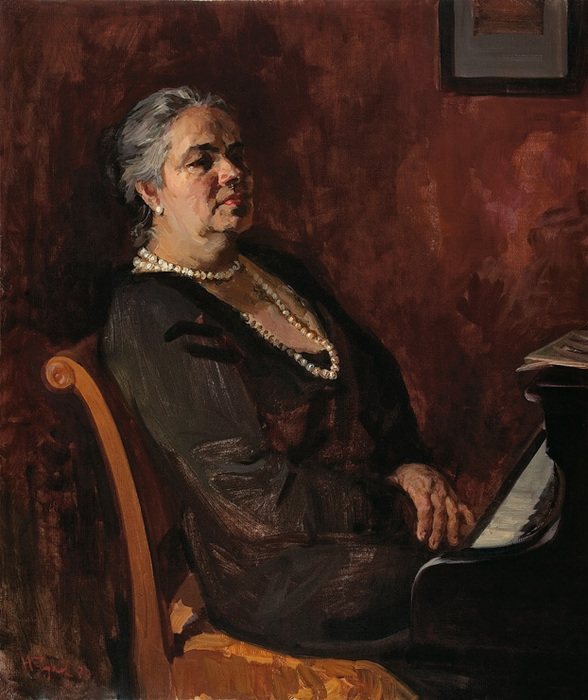 approach this dual anniversary. We’ve tried everything: to compared them on some formal parameter, such as their piano or violin concertos, or their symphonies, as dissimilar as they are, or emphasize incongruities, which are numerous. Nothing really ever worked. Some years we’ve written about one or another; that always felt incomplete. This year we’ll just acknowledge them and move on. Several interesting composers were also born this week, for example Stanisław Moniuszko, the author of many songs and the father of the Polish national opera (Halka, The Haunted Manor and several other operas are still being staged, more often in Poland and Belarus, where Moniuszko is also considered a national composer). Moniuszko was born on May 5th of 1805. The French organist and composer Marcel Dupré (born on this day in 1886), Carl Stamitz, the German composer of Czech descent and one of the more interesting representatives of the Mannheim school (b. May 8th of 1745), the American pianist and composer Louis Moreau Gottschalk (b. May 8th of 1829) – all have their anniversaries this week.
approach this dual anniversary. We’ve tried everything: to compared them on some formal parameter, such as their piano or violin concertos, or their symphonies, as dissimilar as they are, or emphasize incongruities, which are numerous. Nothing really ever worked. Some years we’ve written about one or another; that always felt incomplete. This year we’ll just acknowledge them and move on. Several interesting composers were also born this week, for example Stanisław Moniuszko, the author of many songs and the father of the Polish national opera (Halka, The Haunted Manor and several other operas are still being staged, more often in Poland and Belarus, where Moniuszko is also considered a national composer). Moniuszko was born on May 5th of 1805. The French organist and composer Marcel Dupré (born on this day in 1886), Carl Stamitz, the German composer of Czech descent and one of the more interesting representatives of the Mannheim school (b. May 8th of 1745), the American pianist and composer Louis Moreau Gottschalk (b. May 8th of 1829) – all have their anniversaries this week.
The person we would like to remember today is Tatiana Nikolayeva, a Soviet pianist not well known in the West. She was born on May 5th of 1924 in Bezhitsa, a small town near the city of Bryansk. She started playing piano at the age of three, then moved to Moscow where she studied with Alexander Goldenweiser. Very poor, she earned a bit of money working as an accompanist. She graduated the Moscow Conservatory in 1947 majoring in piano and three years later received a diploma in composition, both cum laude. In 1950 Nikolayeva won a Bach International Competition in Leipzig. Dmitry Shostakovich was the Chairman of the jury and they became good friends. It was Nikolayeva who two years later premiered Shostakovich’s 24 Preludes and Fugues. Nikolayeva’s repertoire was enormous: her page on the site of the Moscow Conservatory states that from 1942 to 1993 she played 3,000 concerts, performing 1,000 different composition by 74 composers. She recorded more than 50 LPs and 20 CDs. Nikolayeva played all clavier compositions by Bach, all piano sonatas and concertos by Beethoven, piano music by Scarlatti, Mozart, Schubert, Chopin, Schumann and on to the 20th century. She performed the composers that were either not popular or semi-banned in the Soviet Union, such as Stravinsky and Hindemith. For more than thirty years Nikolayeva was a professor at the Moscow Conservatory; among her students were Nikolai Lugansky and Oxana Yablonskaya. On November 13, 1993 Nikolayeva was playing a concert in San Francisco when she had a stroke. She died nine days later, on November 22nd of that year.
It’s hard to select a representative sample from such a rich legacy but playing a Prelude and Fugue by Shostakovich seems appropriate. Here is no. 22, in G minor. The recording was made in 1962.Permalink
This Week in Classical Music: April 26, 2021. Jean de Castro. Of all the composers and performers that we’re aware of, the only really significant one to have a birthday this week is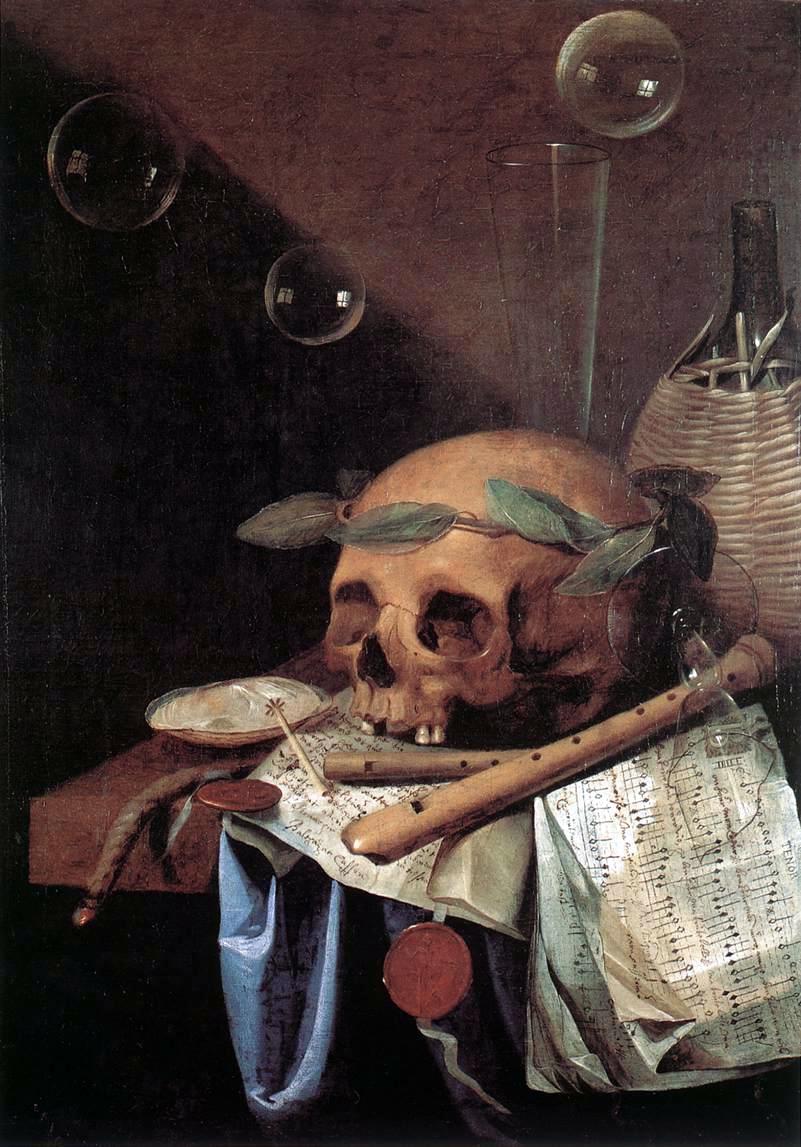 Alessandro Scarlatti. We think very highly of him and thanks to Cecilia Bartoli his music is better known these days, although he still seems to be rather underappreciated. We’ve written about him several times, including this entry a year ago (but also here and here). Duke Ellington, born on April 29th of 1899, was a tremendously talented composer but a jazz-related site would be a more appropriate place to celebrate him. We, on the other hand, will use this time to write about one of the numerous composers of the Renaissance and early Baroque whose birth dates were lost. We are aware of about 150 composers that were born from the end of the 14th to the beginning of the 18th centuries, whose birthdays are unknown. In reality, there are many more, and there is a surprisingly large number of them who were born later, in the 18th and even 19th century, whose birth records were lost. We’ve written many times about the giants of earlier eras, such as Guillaume Dufay, Josquin des Prez, Orlando di Lasso, Giovanni Pierluigi da Palestrina and Tomás Luis de Victoria, but never about Jean de Castro, even though during his life (1540 – 1600) only one composer, Lasso, was published more often than him. Castro, despite his Spanish-sounding name, was a Fleming, born in Liège, the city poetically referred to as nostre Castro in Latin. Castro is interesting (and unusual) for being an itinerant musician: most composers of his standing had well-positioned patrons, usually from the nobility or the Church. Castro, on the other hand, moved from one place to another, looking for opportunities, usually finding them within the emerging merchant class of the rich Northern countries. In the 1560s Castro moved to Antwerp, then one of the cultural centers of the Spanish Netherlands, famous for its printing culture, and stayed there till 1576, when the city was decimated by the mutinous Spanish soldiers of Philip II (as Rome was, almost exactly half a century earlier, by the mutinous soldiers of his father, Charles V). While in Antwerp, Castro set to music several sonnets by the famous French poet of the time, Pierre Ronsard. One of them was Bon jour mon Coeur, which Orlando di Lasso also used for a chanson. We don’t have access to Castro’s rendition, but here is the one by Lasso. On the other hand, the picture, above, by a French painter Simon Renard de St. André is a testimony to the popularity of Castro’s music: the notes are from his version of Bon jour mon Coeur. In 1576 Castro fled to Germany and then moved to France. The ten years of his wandering are poorly documented, but in 1586 he returned to Antwerp, where he attended the wedding of Duke Johann Wilhelm de Jülich in Düsseldorf, to whom he dedicated a book of music. This was an auspicious meeting, as two years later the Duke made him the Kapellmeister at Düsseldorf. Castro stayed there for three following years, this being the only stable position of his career. In 1591 the Duke had several strokes and went mad, and Castro moved to Cologne, where he remained for the rest of his life.
Alessandro Scarlatti. We think very highly of him and thanks to Cecilia Bartoli his music is better known these days, although he still seems to be rather underappreciated. We’ve written about him several times, including this entry a year ago (but also here and here). Duke Ellington, born on April 29th of 1899, was a tremendously talented composer but a jazz-related site would be a more appropriate place to celebrate him. We, on the other hand, will use this time to write about one of the numerous composers of the Renaissance and early Baroque whose birth dates were lost. We are aware of about 150 composers that were born from the end of the 14th to the beginning of the 18th centuries, whose birthdays are unknown. In reality, there are many more, and there is a surprisingly large number of them who were born later, in the 18th and even 19th century, whose birth records were lost. We’ve written many times about the giants of earlier eras, such as Guillaume Dufay, Josquin des Prez, Orlando di Lasso, Giovanni Pierluigi da Palestrina and Tomás Luis de Victoria, but never about Jean de Castro, even though during his life (1540 – 1600) only one composer, Lasso, was published more often than him. Castro, despite his Spanish-sounding name, was a Fleming, born in Liège, the city poetically referred to as nostre Castro in Latin. Castro is interesting (and unusual) for being an itinerant musician: most composers of his standing had well-positioned patrons, usually from the nobility or the Church. Castro, on the other hand, moved from one place to another, looking for opportunities, usually finding them within the emerging merchant class of the rich Northern countries. In the 1560s Castro moved to Antwerp, then one of the cultural centers of the Spanish Netherlands, famous for its printing culture, and stayed there till 1576, when the city was decimated by the mutinous Spanish soldiers of Philip II (as Rome was, almost exactly half a century earlier, by the mutinous soldiers of his father, Charles V). While in Antwerp, Castro set to music several sonnets by the famous French poet of the time, Pierre Ronsard. One of them was Bon jour mon Coeur, which Orlando di Lasso also used for a chanson. We don’t have access to Castro’s rendition, but here is the one by Lasso. On the other hand, the picture, above, by a French painter Simon Renard de St. André is a testimony to the popularity of Castro’s music: the notes are from his version of Bon jour mon Coeur. In 1576 Castro fled to Germany and then moved to France. The ten years of his wandering are poorly documented, but in 1586 he returned to Antwerp, where he attended the wedding of Duke Johann Wilhelm de Jülich in Düsseldorf, to whom he dedicated a book of music. This was an auspicious meeting, as two years later the Duke made him the Kapellmeister at Düsseldorf. Castro stayed there for three following years, this being the only stable position of his career. In 1591 the Duke had several strokes and went mad, and Castro moved to Cologne, where he remained for the rest of his life.
As tastes changed early in the 17th century, Jean de Castro was forgotten, as were many other composers of the Renaissance. He still mostly is, which is a pity, as he was a wonderful composer: listen, for example, to this chanson of his, Quand je dors. It is performed by the Ensemble Clément Janequin under the direction of Dominique Visse.Permalink
This Week in Classical Music: April 19, 2021. Franco Corelli. For the past two weeks we’ve been so busy with Karajan that we missed an important date: the 100th anniversary of Franco Corelli. Corelli was one of the greatest tenors of the 20th century, who excelled on the biggest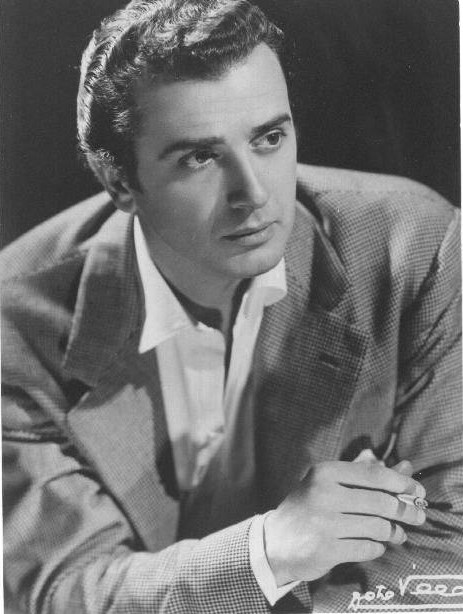 opera stages of Europe and America and left a wonderful recording legacy. He had a clear, powerful voice with a wide range, what the Italians call “spinto” tenor: he could handle both the dramatic roles (think of Mario del Monaco in the role of Canio in Pagliacci or Radames in Aida) and the lyric ones (like Pavarotti singing Rodolfo in La Boheme). It didn’t hurt that Corelli was also a handsome man with good acting abilities. Franco Corelli was born in Ancona on April 8th of 1921. His grandfather was a successful opera singer and many other family members sung either professionally or as amateurs. For a while Corelli studied at the Pesaro Conservatory, but soon decided that he didn’t like voice teachers; from that time on he was mostly self-taught. Corelli made his operatic debut in 1951 in Spoleto, singing Don José in Carmen. In 1952 he sung in the Rome Opera and joined it in 1953. That same year he sung Pollione in Norma, with Maria Callas performing the title role. In 1954 he made his debut in the famed La Scala, again singing with Callas in Spontini's opera La vestale (the opera is rarely staged these days, but YouTube has both the full opera and also this wonderful scene). Corelli would appear with Callas many times, both in La Scala and at the Met. He was asked to perform in the best opera theaters of Italy; then, in 1957, he appeared in Vienna’s State Opera, and the same year made a sensational debut in the Covent Garden, singing Cavaradossi in Tosca. The following year he went to the US, singing in Chicago and San Francisco, and in 1961 made his debut at the Met. During these years he sung with the best sopranos of the generation, Maria Callas, his favorite, Renata Tebaldi, Magda Olivero, the mezzo Giulietta Simionato and, later, Joan Sutherland. At the Met he sung with Leontine Price (she was his Leonora when Corelli sung Manrico in Il Trovatore in his first appearance at the theater) and Birgit Nilsson (their Turandot was spellbinding). Corelli sung at the Met for ten years, giving 282 performances of 18 roles.
opera stages of Europe and America and left a wonderful recording legacy. He had a clear, powerful voice with a wide range, what the Italians call “spinto” tenor: he could handle both the dramatic roles (think of Mario del Monaco in the role of Canio in Pagliacci or Radames in Aida) and the lyric ones (like Pavarotti singing Rodolfo in La Boheme). It didn’t hurt that Corelli was also a handsome man with good acting abilities. Franco Corelli was born in Ancona on April 8th of 1921. His grandfather was a successful opera singer and many other family members sung either professionally or as amateurs. For a while Corelli studied at the Pesaro Conservatory, but soon decided that he didn’t like voice teachers; from that time on he was mostly self-taught. Corelli made his operatic debut in 1951 in Spoleto, singing Don José in Carmen. In 1952 he sung in the Rome Opera and joined it in 1953. That same year he sung Pollione in Norma, with Maria Callas performing the title role. In 1954 he made his debut in the famed La Scala, again singing with Callas in Spontini's opera La vestale (the opera is rarely staged these days, but YouTube has both the full opera and also this wonderful scene). Corelli would appear with Callas many times, both in La Scala and at the Met. He was asked to perform in the best opera theaters of Italy; then, in 1957, he appeared in Vienna’s State Opera, and the same year made a sensational debut in the Covent Garden, singing Cavaradossi in Tosca. The following year he went to the US, singing in Chicago and San Francisco, and in 1961 made his debut at the Met. During these years he sung with the best sopranos of the generation, Maria Callas, his favorite, Renata Tebaldi, Magda Olivero, the mezzo Giulietta Simionato and, later, Joan Sutherland. At the Met he sung with Leontine Price (she was his Leonora when Corelli sung Manrico in Il Trovatore in his first appearance at the theater) and Birgit Nilsson (their Turandot was spellbinding). Corelli sung at the Met for ten years, giving 282 performances of 18 roles.
Corelli performed at the highest level for about 20 years, but in the early 1970s his voice became a little tired, making Corelli nervous. He later said that at that time he could either eat or sleep. Corelli’s last performance was in 1975. Corelli left so many wonderful recordings, both live and studio, that it’s almost impossible to pick one to illustrate his art. Probably one of the best is his Pollione, from Norma, which he recorded in 1960 with Maria Callas and Christa Ludwig – one of the greatest Normas ever. Here is the aria Meco all'altar di Venere from Act I. Tullio Serafin conducts the La Scala Orchestra.Permalink
This Week in Classical Music: April 12, 2021. Karajan, Part II. Last week we paused our Karajan story somewhere around 1946. At the end of the war Herbert von Karajan, a member of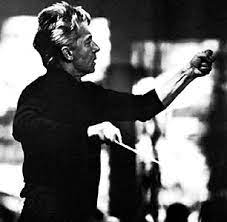 the Nazi party from 1933 and Goering’s favorite, fled to Italy – with the help of the wonderful Italian conductor Victor de Sabata; he then returned to Austria to face the denazification commission and was cleared of any Nazi-related wrongdoings – this time with the help of his father-in law, whose daughter he would divorce soon after. In 1946 he met Walter Legge, the famous record producer and the founder of London’s Philharmonia Orchestra, with which Karajan started a very fruitful relationship. During that time, he also worked with the Vienna Symphony Orchestra (and sometimes with the Vienna Philharmonic), conducted at La Scala and made conducting appearances at the Bayreuth festivals. In 1955 he achieved a pinnacle (if not the pinnacle) of any conductor’s career: he succeeded Wilhelm Furtwängler as the chief conductor of the Berlin Philharmonic Orchestra. But not everybody forgave Karajan’s past: when he took the Berlin Philharmonic on the first tour of the US, he was met with protests, his concert in Detroit was cancelled and Eugene Ormandy, the music director of the Philadelphia Orchestra, refused to shake his hand. But somehow the rest of the world – and eventually the US as well – forgot about Karajan’s past and fell under his spell. And indeed, Karajan was making wonderful music, there is no doubt about that. His concerts and numerous recording with the Berlin Philharmonic were of the highest order. He was also conducting memorable opera performances at La Scala, Vienna and in Salzburg, where he eventually founded his own Easter Festival. His international tours were immensely popular: when he visited Moscow in 1969, mounted police had to be called to the Great Hall of the Moscow Conservatory to control the crowd. Karajan had the title of Berlin Philharmonic’s music director for life, and conducted the orchestra till 1989, the last year of his life. In 1984 he had a dispute with the orchestra, when he decided to make Sabine Meyer the principal clarinet. The orchestra refused to accept her, Meyer eventually withdrew her candidacy, but the relationship between Karajan and the orchestra was permanently damaged. It is not at all clear who was right in this dispute, the despotic Karajan or the misogynistic orchestra members: after leaving the orchestra, Meyer embarked on a very successful solo career. After that episode, Karajan worked more often with another great orchestra, the Vienna Philharmonic.
the Nazi party from 1933 and Goering’s favorite, fled to Italy – with the help of the wonderful Italian conductor Victor de Sabata; he then returned to Austria to face the denazification commission and was cleared of any Nazi-related wrongdoings – this time with the help of his father-in law, whose daughter he would divorce soon after. In 1946 he met Walter Legge, the famous record producer and the founder of London’s Philharmonia Orchestra, with which Karajan started a very fruitful relationship. During that time, he also worked with the Vienna Symphony Orchestra (and sometimes with the Vienna Philharmonic), conducted at La Scala and made conducting appearances at the Bayreuth festivals. In 1955 he achieved a pinnacle (if not the pinnacle) of any conductor’s career: he succeeded Wilhelm Furtwängler as the chief conductor of the Berlin Philharmonic Orchestra. But not everybody forgave Karajan’s past: when he took the Berlin Philharmonic on the first tour of the US, he was met with protests, his concert in Detroit was cancelled and Eugene Ormandy, the music director of the Philadelphia Orchestra, refused to shake his hand. But somehow the rest of the world – and eventually the US as well – forgot about Karajan’s past and fell under his spell. And indeed, Karajan was making wonderful music, there is no doubt about that. His concerts and numerous recording with the Berlin Philharmonic were of the highest order. He was also conducting memorable opera performances at La Scala, Vienna and in Salzburg, where he eventually founded his own Easter Festival. His international tours were immensely popular: when he visited Moscow in 1969, mounted police had to be called to the Great Hall of the Moscow Conservatory to control the crowd. Karajan had the title of Berlin Philharmonic’s music director for life, and conducted the orchestra till 1989, the last year of his life. In 1984 he had a dispute with the orchestra, when he decided to make Sabine Meyer the principal clarinet. The orchestra refused to accept her, Meyer eventually withdrew her candidacy, but the relationship between Karajan and the orchestra was permanently damaged. It is not at all clear who was right in this dispute, the despotic Karajan or the misogynistic orchestra members: after leaving the orchestra, Meyer embarked on a very successful solo career. After that episode, Karajan worked more often with another great orchestra, the Vienna Philharmonic.
In the last years of his life Karajan had many health issues but was stoic about them. He resigned his post in Berlin in August of 1989 and died two months later, on June 16th of 1989. Karajan made hundreds of recordings; it’s impossible to pick one to demonstrate the quality of his musicianship. His Bruckner was highly regarded; here is the first movement of Bruckner’s Symphony no. 5. It was recorded by Herbert von Karajan and his Berlin Philharmonic Orchestra in 1975.Permalink
This Week in Classical Music: April 5, 2021. Karajan, Part I. Today is the birthday of Herbert von Karajan, one of the greatest conductors of the 20th century. He was born in 1908, in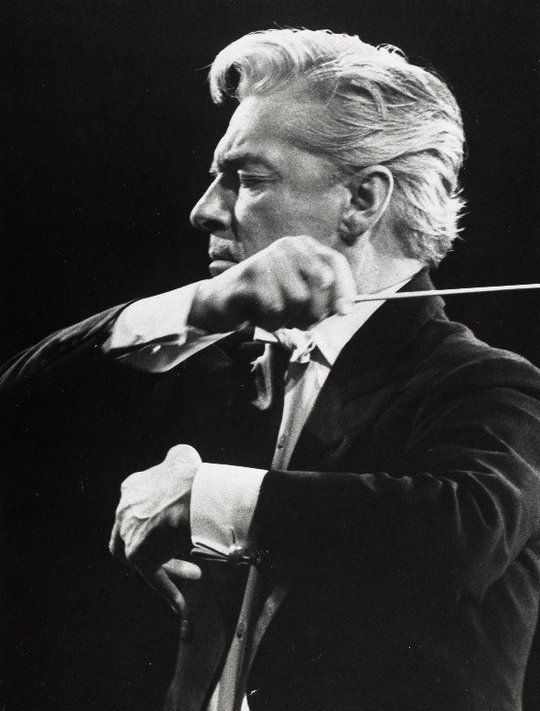 Salzburg. Karajan is a Germanized version of the Greek name Karajannis; Herbert’s great-great-grandfather was born in what’s now Greece (back then the territory was an Ottoman possession) and moved to Vienna in 1767. Karajan’s story presents a problem similar to the one posed by the life of the recently deceased James Levine: how are we to judge – or accept – a tremendous musical talent embodied in a flawed personality. In the case of Levine, it was very credible accusations of sexual abuse of young men. With Karajan it was his membership in the Nazi Party. It appears that Karajan joined the Party twice, first, in April of 1933 while in Salzburg, and then two years later when he was living in Aahen. April 1933 was just months after Nazis came to power in Germany – joining the Nazi Party then was early and damning. Moreover, it has been said that during the Nazi period he always opened his concerts with the "Horst-Wessel-Lied," Nazi’s unofficial anthem. We should contrast this with Wilhelm Furtwängler, the leading conductor of the time. Here’s from Wikipedia: “Furtwängler never joined the Nazi Party. He refused to give the Nazi salute, to conduct the Horst-Wessel-Lied, or to sign his letters with "Heil Hitler", even those he wrote to Hitler.” He also refused to participate in many propaganda activities. Moreover, Furtwängler had helped many of his Jewish musicians to escape prosecution. Nevertheless, because Furtwängler stayed in Germany during the Nazi years, he had to endure a lengthy de-Nazification trial and years later had to suffer the humiliation of a rescinded offer from the Chicago Symphony, when Toscanini, Szell, Horowitz and several other prominent musicians threatened the orchestra with a boycott if Chicago were to hire him. Karajan’s fate was very different: he was examined by the de-Nazification board and immediately cleared of any illegal activities, resuming his international career shortly thereafter. On the other hand, it should be mentioned that in 1942 Karajan married a quarter-Jewish Anita Gütermann, after which he was stripped of many positions (he did keep the directorship at the Staatskapelle, though). The Salzburg Wiki says that after the war Karajan and Gütermann fled to Italy, as he was temporarily banned from performing in Germany and Austria. Karajan pleaded with his father-in-law to help him in his de-Nazification process, which Gütermann apparently did. Karajan’s gratitude didn’t last long, as in the early 1950s he met the young French model Eliette Mouret and divorced Anita.
Salzburg. Karajan is a Germanized version of the Greek name Karajannis; Herbert’s great-great-grandfather was born in what’s now Greece (back then the territory was an Ottoman possession) and moved to Vienna in 1767. Karajan’s story presents a problem similar to the one posed by the life of the recently deceased James Levine: how are we to judge – or accept – a tremendous musical talent embodied in a flawed personality. In the case of Levine, it was very credible accusations of sexual abuse of young men. With Karajan it was his membership in the Nazi Party. It appears that Karajan joined the Party twice, first, in April of 1933 while in Salzburg, and then two years later when he was living in Aahen. April 1933 was just months after Nazis came to power in Germany – joining the Nazi Party then was early and damning. Moreover, it has been said that during the Nazi period he always opened his concerts with the "Horst-Wessel-Lied," Nazi’s unofficial anthem. We should contrast this with Wilhelm Furtwängler, the leading conductor of the time. Here’s from Wikipedia: “Furtwängler never joined the Nazi Party. He refused to give the Nazi salute, to conduct the Horst-Wessel-Lied, or to sign his letters with "Heil Hitler", even those he wrote to Hitler.” He also refused to participate in many propaganda activities. Moreover, Furtwängler had helped many of his Jewish musicians to escape prosecution. Nevertheless, because Furtwängler stayed in Germany during the Nazi years, he had to endure a lengthy de-Nazification trial and years later had to suffer the humiliation of a rescinded offer from the Chicago Symphony, when Toscanini, Szell, Horowitz and several other prominent musicians threatened the orchestra with a boycott if Chicago were to hire him. Karajan’s fate was very different: he was examined by the de-Nazification board and immediately cleared of any illegal activities, resuming his international career shortly thereafter. On the other hand, it should be mentioned that in 1942 Karajan married a quarter-Jewish Anita Gütermann, after which he was stripped of many positions (he did keep the directorship at the Staatskapelle, though). The Salzburg Wiki says that after the war Karajan and Gütermann fled to Italy, as he was temporarily banned from performing in Germany and Austria. Karajan pleaded with his father-in-law to help him in his de-Nazification process, which Gütermann apparently did. Karajan’s gratitude didn’t last long, as in the early 1950s he met the young French model Eliette Mouret and divorced Anita.
Be it as it may, Karajan was a tremendously talented and hardworking conductor. He spent his formative years, 1929 to 1934, as the assistant Kapellmeister at Ulm’s Städtisches Theater. He then moved to Aachen as the youngest ever Generalmusikdirektor. In 1938 he made his debut with the Berlin Philharmonic, and in 1941 he was appointed music director of the Staatskapelle Berlin, where Daniel Barenboim currently occupies the same position. In 1946 he met Walter Legge who had just a year earlier formed the Philharmonia Orchestra in London. Karajan worked with the Philharmonia Orchestra from 1946 till 1960, making a number of notable recordings.
In 1946 Karajan was 38 and had another 43 years to live and conduct, which he would till the very end. We’ll continue with him next week.Permalink
This Week in Classical Music: March 29, 2021. April 1st is a big day for pianists: first of all, it’s the birthday of Sergei Rachmaninov, one of the greatest pianists in history and of course a brilliant composer, who wrote many pieces for his favorite instrument. Rachmaninov’s music,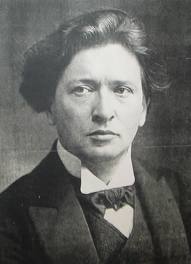 especially his piano concertos no. 2 and 3, is widely played and popular with music listeners. It’s also the birthday of Ferruccio Busoni, also a pianist and composer. As a composer he’s not as famous as Rachmaninov, although his piano transcriptions of the organ works by Bach are part of the standard piano repertoire, but as a pianist he rivaled anybody at the end of the 19th – early 20th century. Busoni was born in 1866, Rachmaninov – in 1873, and these six years, plus the fact that Busoni lived only 58 years make a big difference in their recording legacies: we have a significant number of recordings by Rachmaninov, some of them – recordings of his own works; they are well-known and well-loved. Not so with Busoni: all that is left are several recordings made during one day in February of 1922 at Columbia Studios in London. Their quality is low, the background noise significant, but they are still interesting as historical artefacts. Here is Busoni playing his own transcription of Bach’s organ prelude Nun freut euch, lieben Christen gmein (Rejoice, Beloved Christians) BWV 734. Busoni also made several piano rolls, but those do not authentically represent the pianist’s art. One of the few champions of Busoni’s original compositions is the wonderful pianist Alfred Brendel. Here he is playing, live, Busoni’s Toccata (Preludio - Fantasia – Ciaccona).
especially his piano concertos no. 2 and 3, is widely played and popular with music listeners. It’s also the birthday of Ferruccio Busoni, also a pianist and composer. As a composer he’s not as famous as Rachmaninov, although his piano transcriptions of the organ works by Bach are part of the standard piano repertoire, but as a pianist he rivaled anybody at the end of the 19th – early 20th century. Busoni was born in 1866, Rachmaninov – in 1873, and these six years, plus the fact that Busoni lived only 58 years make a big difference in their recording legacies: we have a significant number of recordings by Rachmaninov, some of them – recordings of his own works; they are well-known and well-loved. Not so with Busoni: all that is left are several recordings made during one day in February of 1922 at Columbia Studios in London. Their quality is low, the background noise significant, but they are still interesting as historical artefacts. Here is Busoni playing his own transcription of Bach’s organ prelude Nun freut euch, lieben Christen gmein (Rejoice, Beloved Christians) BWV 734. Busoni also made several piano rolls, but those do not authentically represent the pianist’s art. One of the few champions of Busoni’s original compositions is the wonderful pianist Alfred Brendel. Here he is playing, live, Busoni’s Toccata (Preludio - Fantasia – Ciaccona).
Dinu Lipatti, a great Romanian pianist, was also born on April 1st, in 1917. We wrote about him two years ago, here. In that entry there’s also more information about Rachmaninov the pianist. There is also a bit about Vladimir Krainev, a wonderful Soviet pianist, who was born on April 1st of 1944. Here are Schumann’s Symphonic Etudes, recorded by Krainev live in 1974. Busoni had many pupils, Egon Petri and Percy Granger among them. Krainev was also a prominent teacher. In 1994, during an economically difficult period in Russia, he organized a foundation to help young musicians. The foundation has grown and now has affiliates in several countries. He also organized the Krainev Young Pianists Competition which has helped to promote careers of dozens of young pianists.
Franz Joseph Haydn was also born this week, on March 31st of 1732. We love him and have written about him many times. And Alessandro Stradella, whose biography is almost as unusual that of Carlo Gesualdo was born on April 3rd of 1639.Permalink